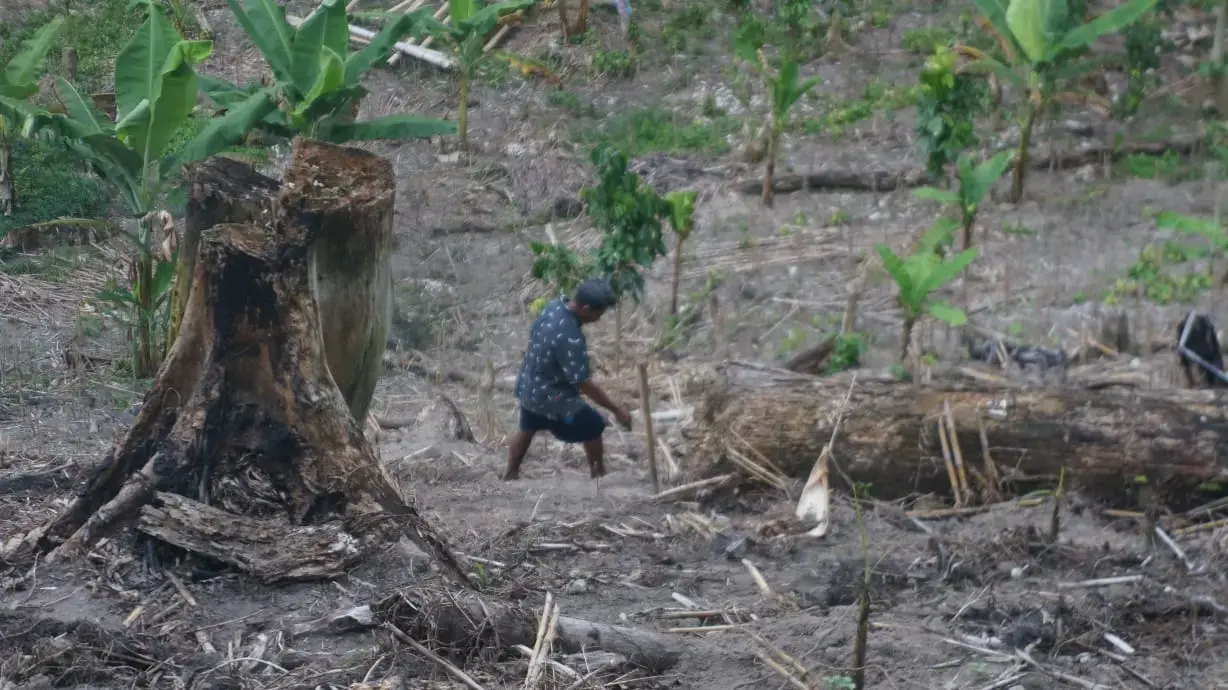This story excerpt was translated from bahasa Indonesia. To read the original story in full, visit Lipu Naratif. You may also view the original story on the Rainforest Journalism Fund website here. Our website is available in English, Spanish, bahasa Indonesia, French, and Portuguese.

Striving for the forests of Bogani Nani Wartabone National Park to become a shared home: For humans and the diverse flora and fauna that depend on them.

Before the sun rose, at 04:30, we finally arrived at the maleo bird monitoring site (Macrochepalon maleo) in Maleo Sanctuary, Tambun, an area of TNBNW in East Dumoga District, Bolaang Mongondow Regency. To get to the monitoring site, we had to step carefully so as not to step on the holes containing maleo eggs.
I was accompanied by Max W. Lela, Head of the East Dumoga Resort of the WNP Center. The monitoring site was a pond with a black net around it. We have to whisper, so as not to disturb the maleo that will come to lay eggs.
We began to hear the sound of flapping wings, and some maleos landed around us. The exotic bird has a distinctive sound—like a robot's voice—that is usually used to call its mate.

As a nonprofit journalism organization, we depend on your support to fund journalism covering underreported issues around the world. Donate any amount today to become a Pulitzer Center Champion and receive exclusive benefits!
A pair of adult maleos were seen digging in the ground, making a new nesting hole. Interestingly, the two seem to share the task. While the male is digging, the female is watching, and vice versa. As the sunlight began to illuminate this previously pitch-black location, the maleo flock began to take flight, and that was a sign that we could leave the monitoring site.
Max has been doing this monitoring activity regularly for years. He has even memorized the ins and outs of maleo because of his intense monitoring. So, why is it necessary to monitor maleos in their own forest habitat? Because, Max said, what currently threatens the maleo is no longer their natural predators such as monitor lizards, snakes and so on, but a species that has greater threatening power: Humans.









